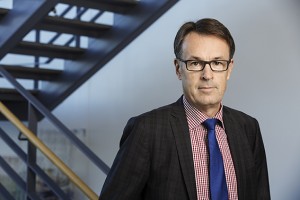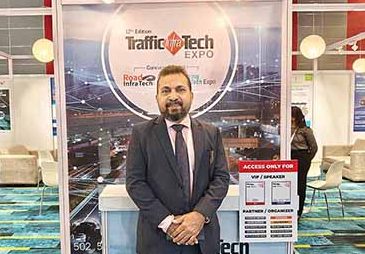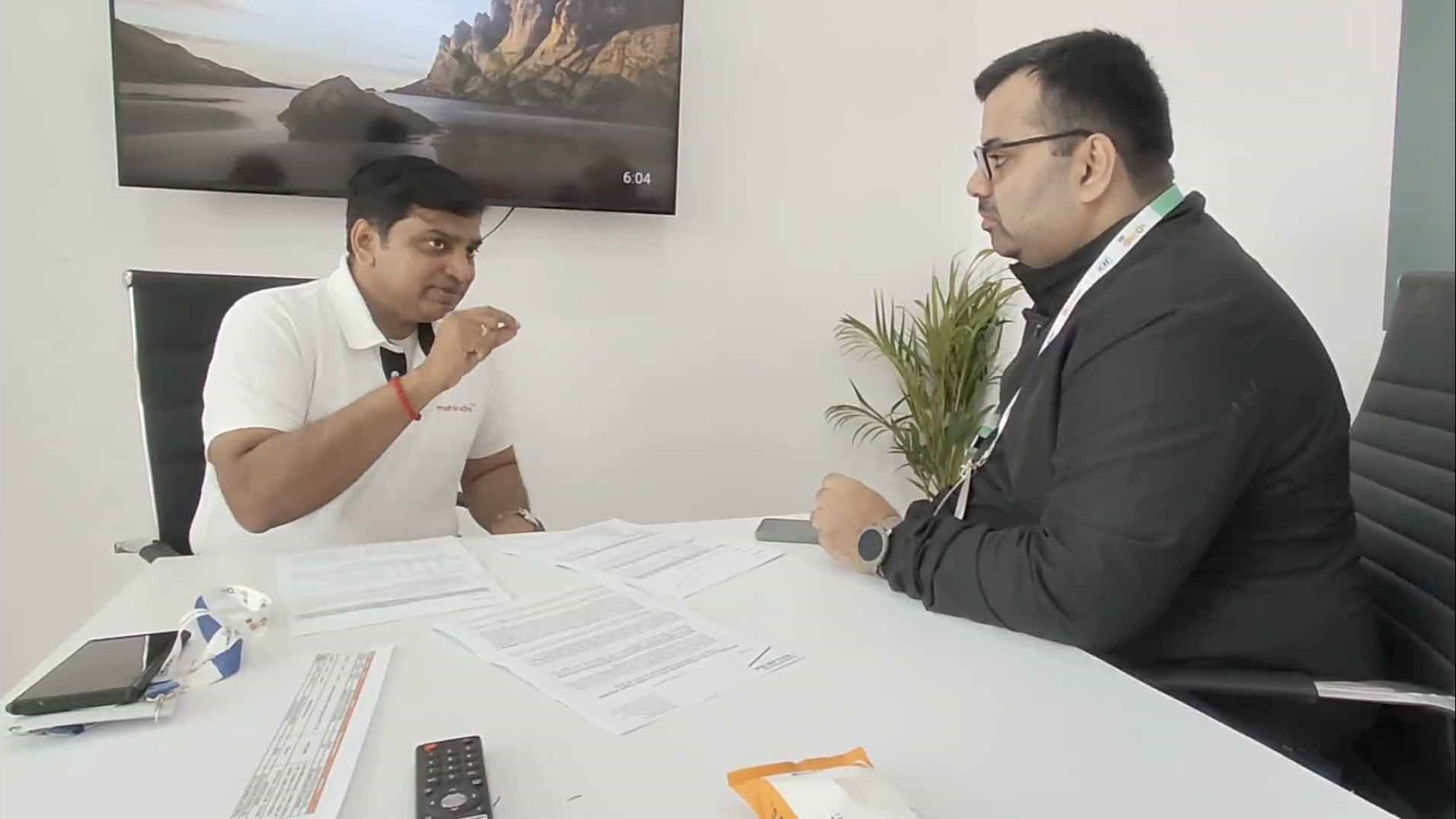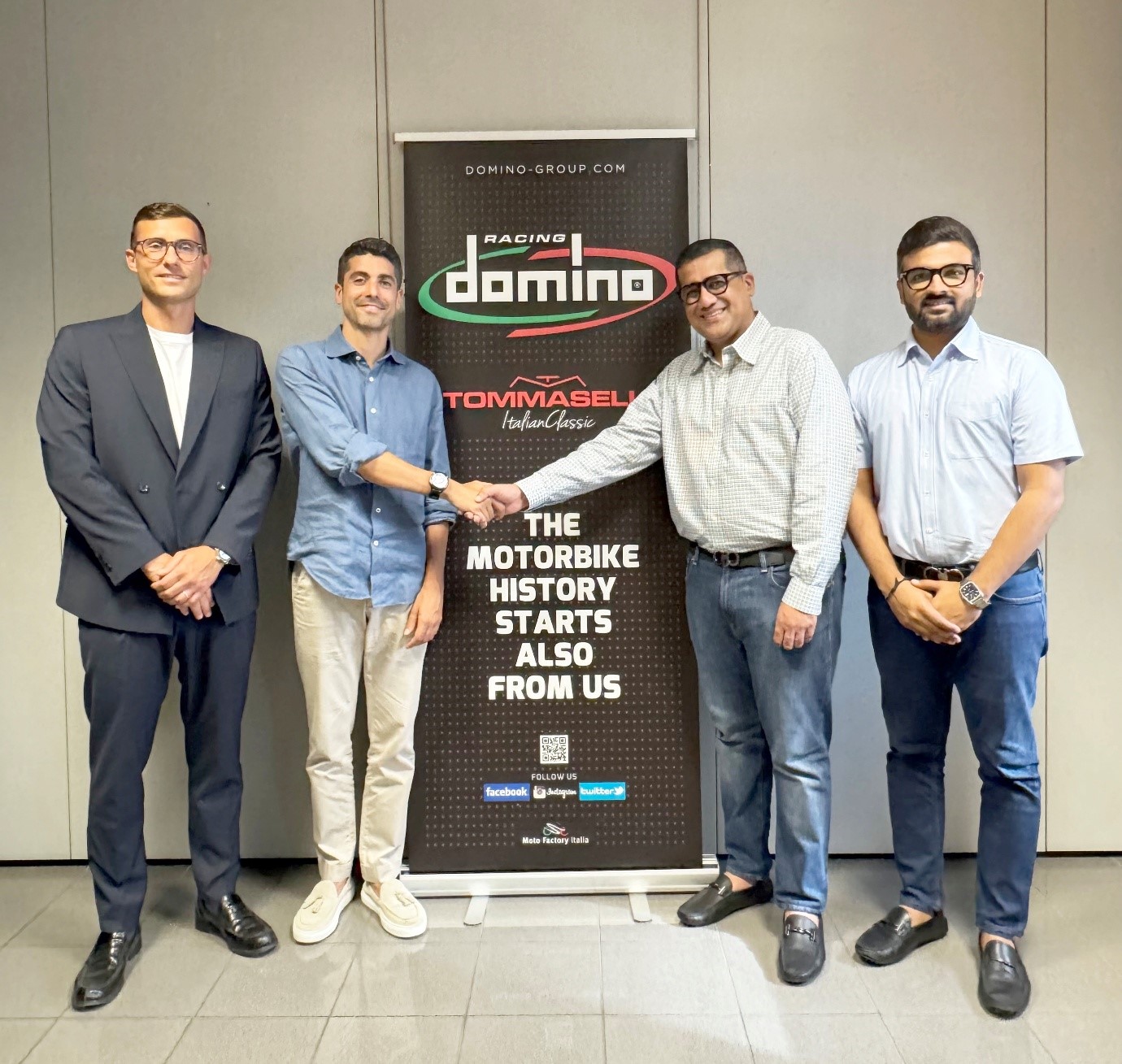Torbjorn Holmstrom, Chief Technology Officer, Volvo Group and Executive Vice President, Volvo Group Trucks Technology spoke to Bhushan Mhapralkar on the future technologies and their plans to bring global technologies to the Indian market. Edited excerpts:

Torbjorn Holmstrom, Chief Technology Officer, Volvo Group and Executive Vice President, Volvo Group Trucks Technology
Q: From a technological view point, where does India figure in Volvo’s scheme of things?
Holmstrom: We came to India in 1996. I was at Bangalore looking for a site. We saw and talked to the government. It was planning to undertake an exercise in good and efficient roads. We saw that we could help to improve the transport efficiency, lower fuel consumption, lower CO2 and reduce accidents. We could play a role in the development. We established a factory in 1997. We trusted the Indian government, and bet on the fact that it will lead to something good. We knew that it would take time. In Brazil from 1977, we know that it takes a while. So, we spent 6 to 7 years to support the factory. We also found out that this is a place for good technology development due to good education. We also saw the spirit of the country. From 2005 to 2015, our R&D in India has grown 100 times. We started with 10, and now have roughly 1000 (people) in Bangalore. India played an absolutely vital role. The technology centre in Bangalore is a very important site in our global structure. It is the third biggest site, and in terms of technology, it is not just contributing to the development of vehicles but also to all the technologies that we have in our group. The Indian centre supports US, Europe, South America and Japan. At an absolute highest technical or technological level, it is doing both, being close to the market and understanding the depth, and using the right technology. It is necessary to understand that we have all the technology, and to be able there upon put the money to push the technological limits. India indeed is a very important part of the setup.
Q: Is India the third largest setup for Volvo?
Holmstrom: Yes, India is the third largest in terms of the head count (R&D Set up). India also contributes to global programmes across group synergies. The India technology site also takes care of the bus part.
Q: How are you employing technology to optimise public transport; to optimise trucking?
Holmstrom: We are trying to optimise transport solutions in a way that they will be sustainable, which is very much about not destroying the environment. Right now, it is very much focussed on CO2. Earlier it was particulates and NOx which we reduced to zero almost. We are in US10 and Euro 6 execution. When you have the size and the possibility to put money on R&D, you also have the technology in the company. When a region or a country is ready, we have a quick way of introducing technology. If India decides to move up to Euro 5 or Euro 6, we are ready. We are pushing the technology to the limits, and the focus currently is on CO2.
Q: What is your view on automation; about driverless commercial vehicles?
Holmstrom: Right now the technology is a little bit ahead of the legislation, and we are working on it. There is however an issue with driverless trucks or cars. Who is responsible if something happens? Is it the one who has programmed it, or is it the connectivity provider or something else. We have test vehicles that have done rounds without a driver. We are right now testing them in confined areas. We have done tests where 4 to 5 vehicles travel one after the other, and the first vehicle is driving the rest. So, automation is possible; technology is there, and we are developing it. What we see is a step-by-step evolution, accompanied by various safety enhancements. It could come as lane keeping support warning systems, collision mitigation, automated queue assistance, intelligent cooperative systems, sensors for all-round vision among others. It will take a few years, 5 to 10 years before we have driverless trucks. There’s also the legislation and infrastructure. In case of legislative bodies, they can sometimes be quick or take a long time to decide. Technology however will be there in the next 5 to 10 years.
Q: How do the various technological center that you have work towards a technological evolution?
Holmstrom: We have a headquarter. It does not sit on all the intelligence. Considering that we want to develop a new software for one part of automation, it is possible that the Bangalore center knows about it the best. We assign that center with the task as a general development. We then plug and play in the brands across the group. We work very much with common architecture and shared technology. Sharing technology between sites makes us one big global community; a technology community.
Q: How does technology reach out to brands across the group after it is developed as a common reference?
Holmstrom: Let’s say that there is a demand for a specific automation feature where Volvo and Renault are selling their vehicles. The feature was developed by the Indian site. The software package is used for Renault and Volvo. The backbone for the electronic architecture is the same. The other way round, when we do something at Bangalore, it is possible that the technology can be subjected to plug and play across brands and platforms. An engine or an instrument cluster for example. They are done in such a way that they can be modularised; can be subjected to plug and play in other vehicles and configurations.
Q: Commercial vehicle markets differ from that of cars. How does technology work towards satisfying the local needs and regulations?
Holmstrom: Let us consider an engine. The base engine itself is done in one way, and it is possible to run that engine at different emission levels. It could be Euro 3, Euro 4, Euro 5 or Euro 6. The base engine is the same. There are components in them that you alter, but not the whole engine. You change the turbo; you change the software, and tailor make the engine for that specific market. If India goes for Euro 3, we have an execution of that engine for Euro 3. At the same time, the base engine could be also used for Euro 6. Technology is thus used in the system. You have then engineered a certain system that you can upgrade or downgrade to a certain level.
Q: Any CV technologies that Volvo is working upon?
Holmstrom: There are a lot of things we are doing. It involves CO2 emission reduction, waste heat recovery. We started work on waste heat recovery many years back to take heat out of the exhaust in a smart way. We started way back in 1955 to have turbo in the exhaust, which is one step in waste heat recovery. It boosts inlet pressure. Step wise, it could be turbo compounding; waste heat recovery with a ranking process. You put steam or heat a steam antenna and take the power down to the wheels. These are the type of technologies we are working on. We co-operate with universities the world over. We have a program that connects with universities not just in India, but in the US, Sweden, France, China and so on. Going forward, it is in this manner that the technology need will expand almost exponentially. From automation to combustion technology, we have to be connected to the whole world. We are present in 192 countries. We sell products in these countries, and have the same connections.
Q: Any specific technologies that you are looking at, from India?
Holmstrom: India is at Euro 3 right now. We have had Euro 5 for many years. We tested hundreds and thousands of vehicles out there. We now have Euro 6 for almost 3 years now. We have matured the technology already somewhere else in the world. If India would like to go to Euro 5 or Euro 6, we will introduce it. We know the technology; we know the markets since we have been working there. When it comes to India as a source of technology and innovation, it is very much around software, and about the knowledge to frugally engineer. That is very important for a company like ours.
Q: What incremental changes in technology do you foresee?
Holmstrom: We will start to see connectivity much more. Almost all the vehicles in Europe and US are connected today. From technology point of view, what that could bring is important. Like predictive maintenance that includes proactively proposing the nature of services required by monitoring the vehicle. It will help to tell the owner or the driver to change the necessary parts so that there is no unplanned stop. We thus see technology enhancing efficiency in the transport system. Stress would be on creating systems around connectivity. It is important for a company like us to monitor the state of the vehicle over time. This would help in the development of better vehicles. We have lane keeping support; it warns if the driver falls asleep. Others include cruise control, lane keeping support warning systems, collision mitigation, automated queue assistance, intelligent cooperative systems, sensors for all-round vision and protecting the road users. Many things are coming, which would contribute to better fuel efficiency and safety.
Q: Where do you see India from the emobility perspective?
Holmstrom: Hybridisation for long haul, is coming. If you take pure hybrid where you recuperate braking energy, it is best for stop and go operation and can help get fantastic results in buses. We have yielded fantastic results at places like London. Next step is the plug-in type where you charge so as to be able to run a longer distance on electricity. Third step is full electric. In India, there is interest now to go for hybridisation. In case of plug-in, infrastructure, like a charging station, is needed. There must be good collaboration between the region, city or community to support charging. For which, we are not into setting up of an electrical grid.
Q: Is it possible to have a full-electric vehicle in India?
Holmstrom: Full electric has to have an infrastructure where you can charge on the road. I think it is many years ahead. What I think will come in trucks will be light hybrid, employing brake recuperation that reduces fuel consumption. We don’t yet see it coming in Europe, but there are possibilities to do things like that.
Q: Trends that you see are emerging in India?
Holmstrom: One trend I see is automated gear shifting. If you could combine this with the knowledge about engine, it is possible to optimise fuel consumption. Now that the Golden Quadrilateral has been built, you could take a step in transport efficiency. You could combine that with automated transmission for good efficiency. This will mark a significant step in cutting fuel consumption. We have had great success in Europe and US when it comes to Automated Manual Transmissions (AMT). It is not just that you don’t need to shift, it is in combination with the knowledge of how a vehicle is functioning and how the engine is functioning, which is the advantage Volvo Group has. We have the engine technology, transmission technology and vehicles technology. Combining the 3 is a real good thing, and elevates safety and lower fuel consumption. The driver does not need to concentrate on shifting; does not get fatigued. ABS is important too. ABS regulation is the first step. Consider automatic cruise control for example. You have a radar that checks the vehicle in front; uses the brake and accelerator in combination with the AMT. It will be very safe. You will never ever crash into the vehicle in front. It will come to India with better roads and higher average speeds, and when there will be more powerful vehicles.
Q: How do you balance technology in products versus regional demands of customers and regulations?
Holmstrom: We are always there to fulfill the regulations. If India decides to go for Euro 6, we will prepare ourselves. We try to find the most cost optimised solution for the customers. We look into the customer’s balance sheet to offer something that is very good for them; the best possible technology that we can offer, and not that we want to engineer. We try to engineer to the demand.
Q: What is the future of IC engine?
Holmstrom: If you talk about the diesel process, it in itself is a great invention to convert chemical energy to mechanical energy. The diesel process could be run with different fuels. It could be done with DME (Dimethyl Ether), made from carbon dioxide neutral crops. An engine can be run on that in a very efficient way. If you talk about CO2 emissions, there is definitely a future for diesel – the process. In the case of electrical, the advantage is better efficiency. You should however produce electricity in a CO2 neutral way. In Sweden, 1 kWh is produced at roughly 15 to 15 grams of CO2. If you do that with brown coal or something similar, it is something completely else. In an investigation a Swiss company did – about what is the best way to reduce CO2 than to run a passenger car, they concluded that if you took electricity from the grid in Germany, it is better still to run it on diesel. There is a need to see from the well to the wheel. We will have the diesel process for another 10 to 15 years. It will be very hard to beat it. Even if you look at CO2 emissions, you could run the diesel process on CO2 neutral fuels.
Q: What other technologies are you working on?
Holmstrom: You know about our Super truck. With good infrastructure, aerodynamic drag could be cut down. More aerodynamic friendly vehicles will come; more aerodynamic friendly trailers will come. It is a great opportunity to increase transport efficiency and lower CO2 foot print. There are benefits in running a longer and heavier vehicle too. So, aerodynamic friendly vehicles will come, and also as autonomous vehicles with safety advancements in the next 5 to 7 years. Couple of years ago we took 7 vehicles with different fuels – ethanol, methane, DME, bio-gas, etc., and showed that we could run them in our engine platforms. And, all of them could be carbon neutral fuels. When we calculated carbon footprint from well to wheel, what we found out was that DME made from carbon neutral feedstock was the best and the most efficient fuel. We also looked at methane, but DME, we found out, has high energy content; is easy to use. It is easy to produce as well.
Q: But aren’t regulations limiting the scope of aerodynamics in commercial vehicles?
Holmstrom: We see movement in Europe. They are looking into the issue; giving more freedom when it comes to aerodynamics, both at the rear end of the trailer and at the front of the vehicle. Coming within 5 to 10 years, we see a change in regulations. We will then need to capture that and offer the aerodynamic benefits to our customers. There is a movement in the US also, regarding regulations. Almost all countries have started regulating CO2 emissions. What we are advocating is that aerodynamics is one big part when it comes to reducing the CO2 footprint. Also, the length and weight of the vehicle combination is very important to be more environment friendly.
Q: In terms of weight, what experiments have you carried out?
Holmstrom: Over the years we have worked a lot with reducing weight. If you lose 1 kilogram, you could carry 1 kilogram more on the vehicle. It is good for the environment. Balancing between sophisticated things and what we can sell, it could get too costly. There is a need therefore to balance. Things like high strength steel in cabs for safety and weight. If you talk about new material or new ways of producing, we see 3D printing coming. It is not there yet for mass production, but opens up new design possibilities. We are designing in a certain way when it comes to forgings, castings, etc., and we have limitations. In 3D printing, you open up another dimension, which could result in interesting things. You stretch it further, and you could reduce stocks. You could produce the part just across the assembly line. 3D printing however is for the future. It is very hard to say when it will materialise for practical manufacturing. Right now, the speed and cost is not where we could make practical use of it. We do use 3D printing in our prototypes a lot; to produce small pieces, and to test them. In full manufacturing, it will take some years yet.
Q: Which is the most challenging in case of environment, quality and safety?
Holmstrom: Environment is challenging in case of sustainable transport solution. That is where we put the most money. We do that because it goes straight down to the bottomline. It is very much about fuel consumption. Second comes safety. We have had a very good record for safety. Quality has been there from many, many years. The challenge in technological terms lies in environmental norms.









Leave a Reply